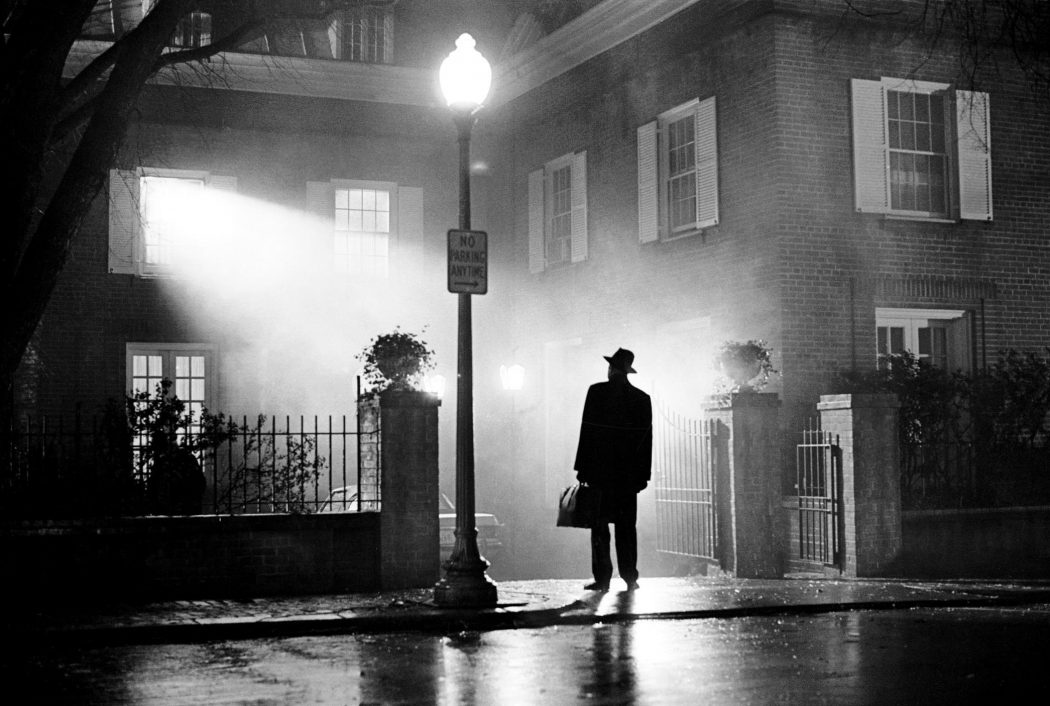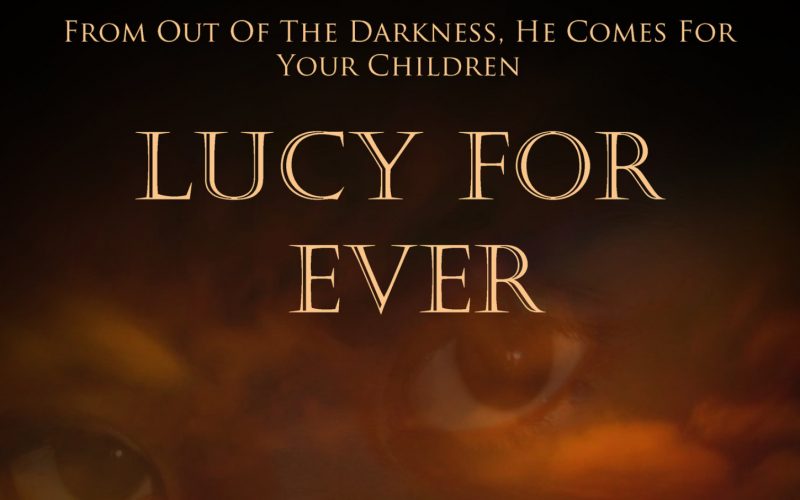The Movies that helped inspire Lucy For Ever.
It would be impossible for me to write a book and not be influenced in some way the movies. Even in short stories, I have difficulty keeping a distance between my love of the moving picture and the desire to tell a story. More often than not, the character names come from some film I’ve seen and loved.
My first novel, Lucy For Ever, is replete with movie references. Some obvious, some less so. Some refer to films that everyone has heard of, others that only devoted cinephiles would know.
Although there are no characters explicitly based on myself or others I know and love, I had very little choice but to make at least one character a film buff. In this case, that character is Jimmy Bevan, the local priest who faces the most incredible challenge to his faith. Jimmy mentions using Twitter and chatting with Cinephiles all around the world. He would certainly follow @Film89UK and listen to the podcasts. In many respects, his taste in film and his devotion to cinema reflects us all at Film ‘89 and, in the course of the book, he mentions or reflects on the films of a diverse group of filmmakers including Yasujiro Ozu, Buster Keaton and John Carpenter, and he lists his favourite film as Cinema Paradiso – as I do.
When discussing Cinema Paradiso, Jimmy explains that whilst there are many films that he loves just as much, he always chooses Cinema Paradiso simply because people keep asking him what his favourite film is, and he needed a consistent answer. It’s a well-loved film which may, as it is in a language other than English, sound exotic and unapproachable to some. It’s not, it’s just an incredibly well-told story about the innocence of childhood, the disillusionment of growing up and a fervour for the movies.

The earliest mention of movies in the book are King Kong (Morgan wears a King Kong Tee-shirt) and Free Willy (in an obvious and not very mature joke that Americans might not necessarily get).
Perhaps the most influential film as I was writing Lucy For Ever is one of the true greats in the history of cinema – William Friedkin’s The Exorcist. The story of a young girl possessed by a demon is a recognised classic which has endured, and will continue to endure, for generations. One of the reasons I believe it’s been so successful is because it is more than just a scary story. The horror is effective, boosted by the fact the victim is a little girl, but it is also a profound mediation on faith.
Father Karras (Jason Miller) is a priest who is losing his faith. As a psychiatrist for the local diocese, Karras has witnessed the depth of despair that his fellow priests have suffered. At the same time his mother is dying and he is wracked with guilt for not being there for her. His prayers are unanswered and he is growing angry at God. Karras is perhaps one of the greatest portrayals of the priesthood in cinema simply because he is so real. He’s not one-dimensional, overly pious or any other cliché we can think of. He is a real, feeling character. We understand him, even those of us who might not share his faith or his doubts, we understand his journey.
This was my inspiration for Jimmy Bevan. I didn’t want to copy Karras – for example, Jimmy does not in any way doubt his profession – but I did want to make him as human as possible. He is married and loves Carys, his wife. Occasionally he lusts after her, appreciating her physically, whilst still relying on her emotionally. She is not a prop, she is a partner – another human being with her own personality. They are in love with each other and everything that entails.

At the end of The Exorcist, Karras regains his faith only after seeing true evil. He must see true despair to realise true faith and true sacrifice. The book and the film were inspired by Mark 5:1-20, the Exorcism of Legion. In this passage, Jesus meets a man possessed by demons who refers to themselves as ‘Legion, for we are many’. Jesus casts out the demons and sends them into a herd of swine. The swine then rush down a hill into the sea where they are drowned. This is replicated at the end of The Exorcist where the demon is cast out of Regan and enters Karras, who then throws himself out of the bedroom window, taking the demon with him. Karras can only make this sacrifice by regaining his belief in the devil before him and in God who can save him.
Jimmy too is transformed by his encounter with Shadow. Whether Shadow is a demon or not is up to the reader to decide. He calls himself ‘Legion’ although doesn’t understand Jimmy when the priest asks, ‘Because you are many?’ The Professor Dr Medford (who was named after the doctor in the classic 1954 giant ant movie, Them!), also affirms that Shadow could be a demon, and it’s in this scene that The Exorcist is raised in conversation. In The Exorcist, the demon compares himself with the devil, and this is the same conclusion that Dr Medford comes to while he studies the sacrilege in the church.
Jimmy realises that he has been living too comfortably, and it is the horrors that occur in Trehenri, the village he calls home, that wakes him up. Like Karras, I wanted Jimmy to be transformed in his faith by facing the unimaginable.
Jimmy’s nephew, Gareth Mann, is the lead detective in the search for the missing children. Although he is a relatively young man, he too was inspired by a character in The Exorcist – Lt. William Kinderman (Lee J Cobb) – maybe not as obvious a reference as Jimmy/Karras, but in their world-weary manners, they are the same. Kinderman has lived a life. We don’t know much about him but neither do we need to, as Cobb is such a fantastic character actor that he only needs a few lines of dialogue to become real. It’s in his manner, in the way he holds himself, in the way he speaks. Gareth doesn’t say a lot. His clothes are ruffled, his face is stubbled, and he feels the stress of his job. Although he is not a xerox of Kinderman, as I was writing him, it was Kinderman I was thinking of.
Another important film that was in the back of my mind as I wrote the finale was John Carpenter’s The Fog. I don’t think there is a film which captures that late-night lethargy as well as The Fog. There is a dreamy atmosphere to it which is wonderfully beguiling, and it is probably my favourite John Carpenter film. I had a good idea of what I wanted to happen at the end of Lucy For Ever but initially couldn’t quite work out how to do it. The image of the revenant storming the church was at the back of my mind throughout and the more I thought of it, the clearer the ending became. It’s a funny process because the ending is not like The Fog at all and the inspiration could easily be missed, but that image guided me to the conclusion. As it was so important to me, I couldn’t help but have it pop into Jimmy’s mind.

In addition to Dr Medford, a number of other characters were named after or inspired by the movies: Gareth Mann was named after director Michael Mann (Heat, The Insider, Thief), Joseph Farhadi was named after the Persian director Asghar Farhadi (A Separation, The Salesman, About Elly) and the name of the old lady that greets Cat and Morgan is Irena Reed, named after Simone Simon’s character in Cat People.
There is one final reference which seems obvious but was entirely unintentional. Tal Jones lives on Henry Hill. Henry Hill, as many people are aware, is the real-life gangster that Ray Liotta played in Martin Scorsese’s masterpiece Goodfellas. As I wrote the first scene with Tal, I was so engrossed in the story that I failed to notice the connection. It wasn’t until I started writing a later chapter and I glanced at the notes I had written, did I realise what I had done. I did think of changing it, however I couldn’t as Henry Hill had become a real place to me. I just hope this doesn’t prove too distracting for people.
There are many other references, many of which I can’t remember now because they were so fleeting, or because the inspiration is so obscure.
Whilst writing Lucy For Ever, I often had to drown out the noise of the TV or computer, of the kids playing, or my wife chatting on the phone. To do this I would don a pair of headphones and play music very loudly. This could be anything from Ennio Morricone, Hans Zimmer or John Williams, however, there was the one soundtrack I listened to the most to get me in the mood: Charles Bernstein’s fantastic score for Wes Craven’s A Nightmare on Elm Street. It had the right amount of chills and thrills to spur me on when writing some of the creepiest scenes. I have a lot of affection for ‘80s horror and especially Freddy Krueger. You can read my retrospective on A Nightmare On Elm Street by clicking on the link below.
Although I love writing, movies will always be my go-to source of entertainment, thrills, tears and cathartic pleasure, and, whatever I write in the future, I will continue to draw inspiration, whether obvious or oblique, from this most perfect of art forms.
Links to related Film ’89 reviews:
Wes Craven: A Nightmare on Elm Street, Shocker
Yasujiro Ozu: Late Autumn, Tokyo Story
Buster Keaton: Sherlock Jnr, The General, Steamboat Bill Jnr
John Carpenter: Big Trouble in Little China, They Live, The Thing, The Thing Podcast
Lucy For Ever is available now in paperback or for Amazon Kindle.

